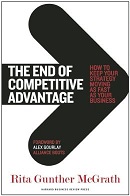Find and share the latest thinking and resources on leadership topics. From quick thought-provoking posts to recommended articles and books, you’ll find a treasure-trove of curated content.
Ask Mariposa: A Tough Transition: Stepping Up to Managing Peers
Talin asks: Since my promotion to a Sr. Director level, one of my former colleagues has refused to acknowledge that I am now her manager. This power struggle has been going on for two years. I am so frustrated that I have a hard time controlling my temper. At the same time, I’m acutely aware that my inability to work with this person has cast me in an unfavorable light with management. How do I solve this problem?
Sue Bethanis, CEO responds:
Hi Talin,
Tough and very common challenge! The root cause of difficulty in stepping up to manage peers can certainly vary, but is often related to a team member feeling slighted that the peer was promoted instead of him or her, feeling that he or she can’t really “learn anything significant” from this peer, or feeling that the peer is not effective or qualified for the new bigger role. It sounds like you’ve been trying to improve this situation for some time. Here are some questions to think about:
- Empathy: Have you truly put yourself in her shoes and given thought to what this experience was like? Tried to understand why she is resistant? Listened for her real objections?
- Acknowledgment: Were you curious about and have you acknowledged her contributions, her expertise? Did you openly discuss the potential difficulty of this transition?
- Leadership Style: How do you try to lead her? Are you directive, a pace-setter, hands-on, a coach, or?? A coaching approach would probably work best as long as she is very competent. (See our ITM Coaching Model for more)
- Impact: How significantly is this issue affecting you, the employee, the team, the company?
Here are some suggestions for actions to take:
- Acknowledge the difficult relationship and its impact on all parties
- Acknowledge your contribution to it
- Ask if she is willing to work together to design a better working relationship because it is required for success – for both of you
- and really LISTEN
- Make clear working agreements
Good luck!
MORE




